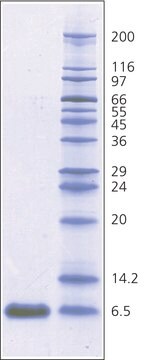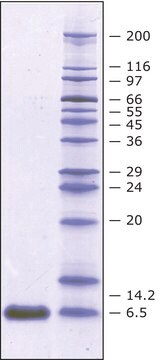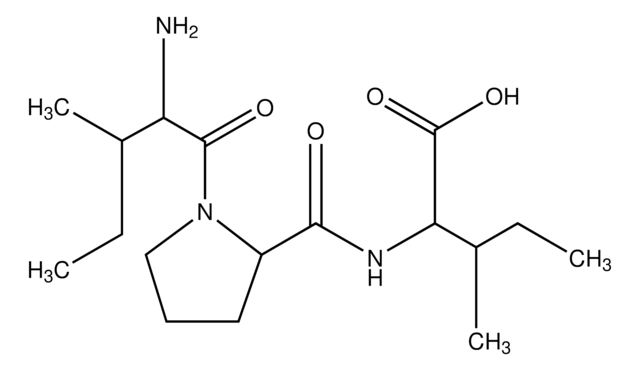A6279
Aprotinin
3-7 TIU/mg protein, saline solution
Synonym(s):
BPTI, Bovine pancreatic trypsin inhibitor, Trasylol, Trypsin inhibitor (basic)
About This Item
Recommended Products
product name
Aprotinin from bovine lung, saline solution, 3-7 TIU/mg protein
biological source
bovine
Quality Level
sterility
aseptically filled
form
saline solution
specific activity
3-7 TIU/mg protein
mol wt
~6,500
solubility
H2O: soluble >10 mg/mL
UniProt accession no.
storage temp.
2-8°C
InChI key
ZPNFWUPYTFPOJU-UHFFFAOYSA-N
Gene Information
cow ... PTI(404172)
Looking for similar products? Visit Product Comparison Guide
General description
Application
Biochem/physiol Actions
Caution
Unit Definition
Preparation Note
Storage Class Code
12 - Non Combustible Liquids
WGK
nwg
Flash Point(F)
Not applicable
Flash Point(C)
Not applicable
Personal Protective Equipment
Certificates of Analysis (COA)
Search for Certificates of Analysis (COA) by entering the products Lot/Batch Number. Lot and Batch Numbers can be found on a product’s label following the words ‘Lot’ or ‘Batch’.
Already Own This Product?
Find documentation for the products that you have recently purchased in the Document Library.
Customers Also Viewed
Protocols
Enzymatic Assay of Aprotinin
Our team of scientists has experience in all areas of research including Life Science, Material Science, Chemical Synthesis, Chromatography, Analytical and many others.
Contact Technical Service






